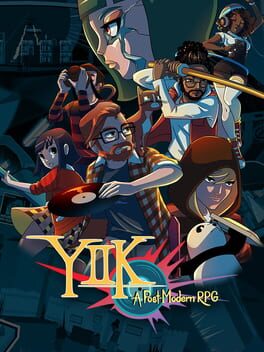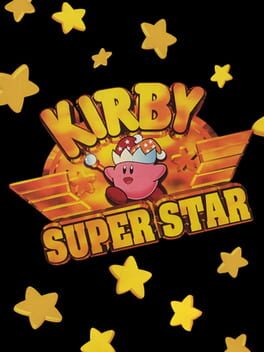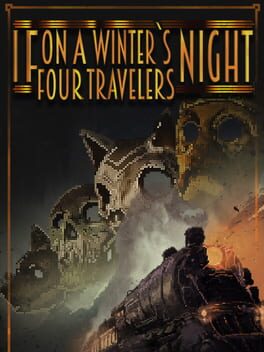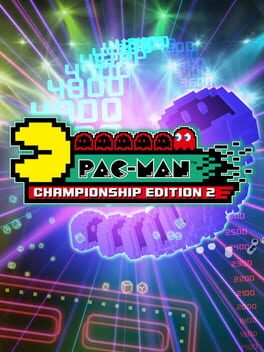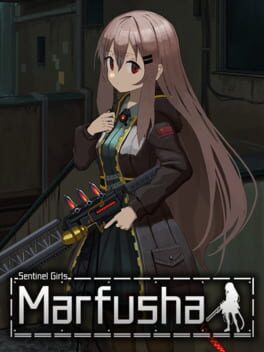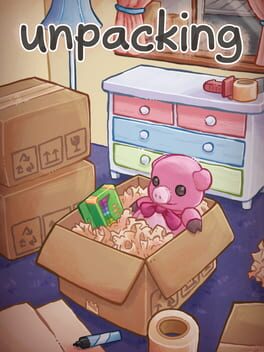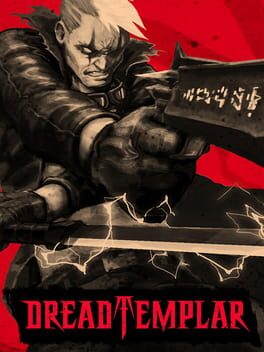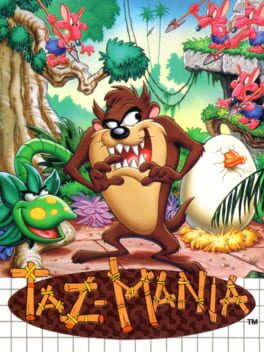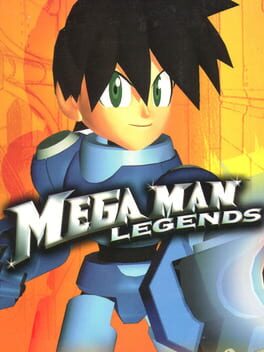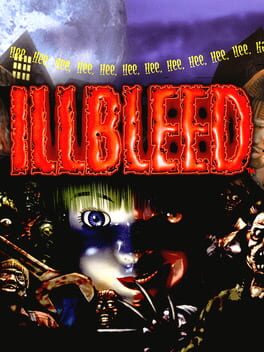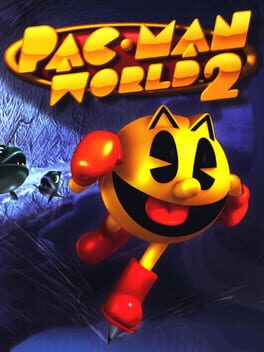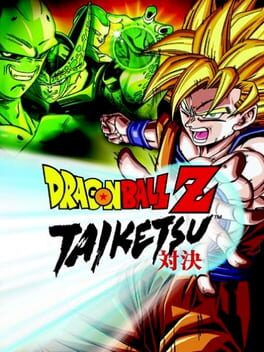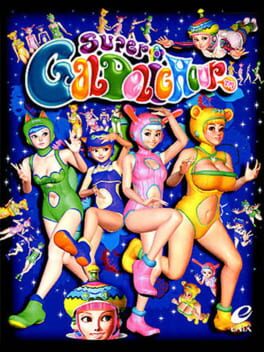Squigglydot
The creative experience is knowing, at any time, you have the potential to put a YIIK into the world. Harrowing.
1996
Kirby Super Star is a beat em up.
Across a dusky horizon, a locomotive barrels down ancient tracks. Bound for an uncertain destination, the train, unceasingly long and coughing out ephemeral emerald smog, trails endlessly through a desert purgatory. Aboard the perpetual line, a cargo of socialites and aristocrats mingle with paupers and vagrants. Obscured by bestial visages, the myriad travellers drown their bewilderment in expensive spirits and pleasantries, their questions and concerns hushed by the vices of high society.
In an unmarked car in the convoy, a young man, burdened by a biting malaise, confides in a weary passenger. With no memory of boarding the train, much less arriving at the platform, he stumbled through the car, remembering little more than his name, and the hours leading up to his faithful departure. This confusion would be understandable in the best of cases, but for the young man, the circumstances behind his sudden arrival left him particularly disturbed, for only moments ago had the man perished.
“If On A Winter’s Night, Four Travelers” lives through its depictions of death, both in the immediate present and in how it confronts the lives of our protagonists. Told through grim vignettes, “Four Travelers” tells the tale of people consumed by passion, anger, and grief, spiraling to a tragic conclusion, a slow-burn melancholy in the tradition of classical horror.
While this would be plenty interesting on its own, where the game really shines is in the art backing it: Talking about the story without discussing the uniquely evocative sprite work would be meaningless. Framed in an isometric lens, the game brings effervescent life to decadent mansions, mortifying dread to a hellish otherworld, and all-encompassing sorrow to a war-torn battlefield. The beauty used in depicting the morbid, morose and macabre is the lynchpin in “Four Travelers’” dreadful drama.
A stunning work packed into a fleeting runtime, “If On A Winter’s Night” is gorgeous, if not narratively well-trodden. An utter gem. Besides… it’s free. Incredibly hard not to recommend.
In an unmarked car in the convoy, a young man, burdened by a biting malaise, confides in a weary passenger. With no memory of boarding the train, much less arriving at the platform, he stumbled through the car, remembering little more than his name, and the hours leading up to his faithful departure. This confusion would be understandable in the best of cases, but for the young man, the circumstances behind his sudden arrival left him particularly disturbed, for only moments ago had the man perished.
“If On A Winter’s Night, Four Travelers” lives through its depictions of death, both in the immediate present and in how it confronts the lives of our protagonists. Told through grim vignettes, “Four Travelers” tells the tale of people consumed by passion, anger, and grief, spiraling to a tragic conclusion, a slow-burn melancholy in the tradition of classical horror.
While this would be plenty interesting on its own, where the game really shines is in the art backing it: Talking about the story without discussing the uniquely evocative sprite work would be meaningless. Framed in an isometric lens, the game brings effervescent life to decadent mansions, mortifying dread to a hellish otherworld, and all-encompassing sorrow to a war-torn battlefield. The beauty used in depicting the morbid, morose and macabre is the lynchpin in “Four Travelers’” dreadful drama.
A stunning work packed into a fleeting runtime, “If On A Winter’s Night” is gorgeous, if not narratively well-trodden. An utter gem. Besides… it’s free. Incredibly hard not to recommend.
Taking a look at Pac-Man, released at the dawn of the 80s, it’s astounding how much Namco’s little cheese wheel altered the course of arcade history. Chalk it up to one of many things: the instantly recognizable characters, the impeccable gameplay, the hidden depth behind the Ghost’s AI and, by association, the “personalities” of Blinky, Pinky, Inky, and Clyde… Each of these individual factors could have made it a bonafide classic, but these unique elements seamlessly coalesced into a certified magnum opus, a work that not only became the face of Namco as a corporation, but of arcades and the U.S. arcade scene as a whole. Extending beyond video games, Pac-Man became a symbol, an international pop culture icon, a somehow-still-relevant vanguard of a bygone era of gaming and a figurehead of 80s culture.
Innovating on a masterpiece is a hefty challenge, especially for something as unchallenged as Pac-Man: despite a slew of creative sequels throughout the 1980s, and a brief foray into 3D platform mediocrity in the early 2000s, the franchise had become somewhat stagnant, reduced to the high prestige befitting a idol of the industry. Of course, in the grand scheme of things, the solution wasn’t a top-to-bottom recreation of what made the series iconic: Instead of reincarnation and rejuvenation, we have a celebration of what audiences through history love about him.
Hypothetically, Pac-Man Championship Edition 2 is the first real evolution the silly orb man has seen in a long time; even within the context of the “Championship Edition” subseries, CE2 takes the purest reading of the 80s original and attempts to modernize it while staying true to its roots. In theory, it’s a modern transfusion into an old-school body, a refresh on an outdated mainstay. In practice, it’s a personification of what makes arcade games mechanically breathtaking in a way that seemingly died with the onset of console gaming.
Perhaps it’s oversimplifying, but CE2 is the closest the franchise has gotten to the excellence of the original release all those years ago. Somewhere between the freeform design funneling toward a singular endpoint, rewarding the player for learning the game’s rules as opposed to endlessly fighting against them, with the lofty goal of mastery holding precedence over “winning” or “losing”, it reminded me of untold hours under dingy lights, bathed in the flash of flickering CRTs and embraced by battered cabinets, the ambient chaos of a hundred soundchips begging for attention. I’m transported back to the decade-plus I toiled away at utter perfection in Galaga, the lackadaisical afternoons in decaying malls where hundreds of dollars were wasted on ill-calibrated light-gun shooters, the summer nights in cluttered garages running brackets on bootleg MAME set-ups, the screeching cacophony of rhythm games demanding undivided focus in a convention ballroom… All the sounds, sights, and feelings derived from a life-long adoration of arcade games.
In my limited experience with Championship Edition 2, nearly eight hours of studying the mechanical minutia and falling into a state of Zen Pac-Mania, I’ve felt a reignition for a passion that had fallen away from me. Most of my writing on here centers on the emotional connection I feel with a game, what it means to me on some sort of fleeting level, and this isn’t different: my time with CE2 was wonderful, but my complete respect for it relies solely on what it represents to me, as an exemplification of the beauty of the arcade experience. It’s something that’s impossible to disconnect, and I don’t see the point in trying to.
Innovating on a masterpiece is a hefty challenge, especially for something as unchallenged as Pac-Man: despite a slew of creative sequels throughout the 1980s, and a brief foray into 3D platform mediocrity in the early 2000s, the franchise had become somewhat stagnant, reduced to the high prestige befitting a idol of the industry. Of course, in the grand scheme of things, the solution wasn’t a top-to-bottom recreation of what made the series iconic: Instead of reincarnation and rejuvenation, we have a celebration of what audiences through history love about him.
Hypothetically, Pac-Man Championship Edition 2 is the first real evolution the silly orb man has seen in a long time; even within the context of the “Championship Edition” subseries, CE2 takes the purest reading of the 80s original and attempts to modernize it while staying true to its roots. In theory, it’s a modern transfusion into an old-school body, a refresh on an outdated mainstay. In practice, it’s a personification of what makes arcade games mechanically breathtaking in a way that seemingly died with the onset of console gaming.
Perhaps it’s oversimplifying, but CE2 is the closest the franchise has gotten to the excellence of the original release all those years ago. Somewhere between the freeform design funneling toward a singular endpoint, rewarding the player for learning the game’s rules as opposed to endlessly fighting against them, with the lofty goal of mastery holding precedence over “winning” or “losing”, it reminded me of untold hours under dingy lights, bathed in the flash of flickering CRTs and embraced by battered cabinets, the ambient chaos of a hundred soundchips begging for attention. I’m transported back to the decade-plus I toiled away at utter perfection in Galaga, the lackadaisical afternoons in decaying malls where hundreds of dollars were wasted on ill-calibrated light-gun shooters, the summer nights in cluttered garages running brackets on bootleg MAME set-ups, the screeching cacophony of rhythm games demanding undivided focus in a convention ballroom… All the sounds, sights, and feelings derived from a life-long adoration of arcade games.
In my limited experience with Championship Edition 2, nearly eight hours of studying the mechanical minutia and falling into a state of Zen Pac-Mania, I’ve felt a reignition for a passion that had fallen away from me. Most of my writing on here centers on the emotional connection I feel with a game, what it means to me on some sort of fleeting level, and this isn’t different: my time with CE2 was wonderful, but my complete respect for it relies solely on what it represents to me, as an exemplification of the beauty of the arcade experience. It’s something that’s impossible to disconnect, and I don’t see the point in trying to.
2021
Dystopian military hellworld by way of a cute anime twitter artist. Cute designs, borderline non-existent animations. Exactly one anime butt. WEIRDLY depressing endings! Every single one!
Gameplay is flash game tier, but like, a good flash game.
Gameplay is flash game tier, but like, a good flash game.
(cw for a very brief mention of self-harm and depression)
It seems like a given for disaffectionate weeblings meandering through cyberspace to eventually run afoul of Vocaloid, the siren song of late-2000s otaku culture that refuses to die, and there's no clearer representative for the brand than the poster child of virtual idols, Hatsune Miku. Through over a decade of image reinvention, musical exploration, and incessant irritation, thousands of producers have used the aquamarine automaton as the mouthpiece for pieces ranging from the goofy to the grotesque, shifting and altering the image of the mascot in tune with the work they produce. In a sense, becoming attached to what is, at its most sincere form, an inanimate face for an audio production tool feels odd, strange, dare I say, cringe. Yet here I am, a terminal victim of the brain virus known as emotional bonding, reminded once again that one of the big moments in coming to terms with my identity was discovering Hatsune Miku.
Retracing my steps, the path is obvious: a teenage girl defined by her constant inconsistency, bound by little more than a modulated soundbank, singing songs of isolation, anxiety, self-loathing, intense misanthropy, undying love and occasional lesbianism. Emotionally torn asunder by a yet-unending depression spiral, yours truly could only break as she found someone who was, in no uncertain terms, just like me (for real for real). But tracking the exact point I realized a hyper-femme soundbank was something beyond a passing interest, instead being a key “being” that I find my self drawn to, something that influenced the art I consider worthwhile, something I find relatability in, is… difficult. Confusing.
… And as much as I want to just tie all of my experiences to sitting alone, listening to embarrassing vent pieces written by producers I really need to tell “it’ll be okay”, what stuck with me was always the games; late nights and early mornings spent playing Project Diva F 2nd with a former best friend, where Rolling Girl lead to me opening up to someone about my own history of self-harm; all-night sessions of Future Tone where the first time I came out as trans was backed by Envy Cat Walk, and outed myself to the dulcet tones of 2D Dream Fever. Inherently difficult times, now remembered with fondness, bitterness, regret.
I guess my experience with Vocaloid, and by association the Project Diva games, is less inherently about the gameplay or mechanics of the game (they’re kino, ludo, cracked, etc) and more the way I connect to the music, the characters, the personal recollection every song has with me. Of the 200 songs in Future Sound and Colorful Tone, the grand majority are dug into my mind, a part of my soul encapsulated into memories that refuse to fade despite my growing memory issues and fear of forgetting the past. The way I feel for the songs, the times attached to them, the irreplaceable history I have with Vocaloid and, almost directly, Hatsune Miku… it’s adoration in its clearest form. For all the regrets I have, of the person I am and the media I’m devoted to, I don’t regret how ingrained the funny computer singer woman has become in my life.
Writing this will never be as deep or as coherent as I want; as hyper-personal as I wish I could be with how Vocaloid has affected me and the course of my life, going into it will never not feel a little fake, a little disingenuous. I can only say that this game, this whole franchise, is a source of my fondest memories. It’s priceless to me, without comparison. I fucking love it.
(this ended up having little to do with the game… play Project Diva Future Tone…)
It seems like a given for disaffectionate weeblings meandering through cyberspace to eventually run afoul of Vocaloid, the siren song of late-2000s otaku culture that refuses to die, and there's no clearer representative for the brand than the poster child of virtual idols, Hatsune Miku. Through over a decade of image reinvention, musical exploration, and incessant irritation, thousands of producers have used the aquamarine automaton as the mouthpiece for pieces ranging from the goofy to the grotesque, shifting and altering the image of the mascot in tune with the work they produce. In a sense, becoming attached to what is, at its most sincere form, an inanimate face for an audio production tool feels odd, strange, dare I say, cringe. Yet here I am, a terminal victim of the brain virus known as emotional bonding, reminded once again that one of the big moments in coming to terms with my identity was discovering Hatsune Miku.
Retracing my steps, the path is obvious: a teenage girl defined by her constant inconsistency, bound by little more than a modulated soundbank, singing songs of isolation, anxiety, self-loathing, intense misanthropy, undying love and occasional lesbianism. Emotionally torn asunder by a yet-unending depression spiral, yours truly could only break as she found someone who was, in no uncertain terms, just like me (for real for real). But tracking the exact point I realized a hyper-femme soundbank was something beyond a passing interest, instead being a key “being” that I find my self drawn to, something that influenced the art I consider worthwhile, something I find relatability in, is… difficult. Confusing.
… And as much as I want to just tie all of my experiences to sitting alone, listening to embarrassing vent pieces written by producers I really need to tell “it’ll be okay”, what stuck with me was always the games; late nights and early mornings spent playing Project Diva F 2nd with a former best friend, where Rolling Girl lead to me opening up to someone about my own history of self-harm; all-night sessions of Future Tone where the first time I came out as trans was backed by Envy Cat Walk, and outed myself to the dulcet tones of 2D Dream Fever. Inherently difficult times, now remembered with fondness, bitterness, regret.
I guess my experience with Vocaloid, and by association the Project Diva games, is less inherently about the gameplay or mechanics of the game (they’re kino, ludo, cracked, etc) and more the way I connect to the music, the characters, the personal recollection every song has with me. Of the 200 songs in Future Sound and Colorful Tone, the grand majority are dug into my mind, a part of my soul encapsulated into memories that refuse to fade despite my growing memory issues and fear of forgetting the past. The way I feel for the songs, the times attached to them, the irreplaceable history I have with Vocaloid and, almost directly, Hatsune Miku… it’s adoration in its clearest form. For all the regrets I have, of the person I am and the media I’m devoted to, I don’t regret how ingrained the funny computer singer woman has become in my life.
Writing this will never be as deep or as coherent as I want; as hyper-personal as I wish I could be with how Vocaloid has affected me and the course of my life, going into it will never not feel a little fake, a little disingenuous. I can only say that this game, this whole franchise, is a source of my fondest memories. It’s priceless to me, without comparison. I fucking love it.
(this ended up having little to do with the game… play Project Diva Future Tone…)
2021
A so-called zen decorator hampered by rules devised by the most maniacal of Feng Shui practitioners, Unpacking isn’t so much an easy-breezy meditation on passion and what we leave behind as we age, and more a reflection on the apparent issues of how I, as an individual, design and decorate.
While the assumed narrative follows a nameless, voiceless protagonist through their life, across break-ups, move-ins, and start-overs, the real story of the game hinges on you, the player, as you realize by way of accursed red-outlines that everything you know about interior design is fucked up and evil. Plates that refuse to go with other plates, lest you be judged, coasters that scream foul if you place mugs atop them, egg timers that rain misery on you for daring to place them a few inches away a cutting board, the inherent madness of owning an air fryer.
Combine weird systematic flaws in what is deemed right or wrong (something that seems bound to happen when working with something as nebulous and personal as interior design) with a storyline that basically equates to “quirky art student goes to college, dates a guy, hides her passion, breaks up, regains passion, dates a girl, there’s nothing to gleam from this game other than the introspection inherent to being told, time and time again, that your mind goblin-addled thoughts are deranged and objectively wrong. It's weird, it’s uncomfortable, and it’s not the takeaway I expect from a game that claims to be a chill, downtempo type experience.
Edit 1: Corrected Typos (11/28/2021).
While the assumed narrative follows a nameless, voiceless protagonist through their life, across break-ups, move-ins, and start-overs, the real story of the game hinges on you, the player, as you realize by way of accursed red-outlines that everything you know about interior design is fucked up and evil. Plates that refuse to go with other plates, lest you be judged, coasters that scream foul if you place mugs atop them, egg timers that rain misery on you for daring to place them a few inches away a cutting board, the inherent madness of owning an air fryer.
Combine weird systematic flaws in what is deemed right or wrong (something that seems bound to happen when working with something as nebulous and personal as interior design) with a storyline that basically equates to “quirky art student goes to college, dates a guy, hides her passion, breaks up, regains passion, dates a girl, there’s nothing to gleam from this game other than the introspection inherent to being told, time and time again, that your mind goblin-addled thoughts are deranged and objectively wrong. It's weird, it’s uncomfortable, and it’s not the takeaway I expect from a game that claims to be a chill, downtempo type experience.
Edit 1: Corrected Typos (11/28/2021).
2021
A work completely devoid of creativity or thoughtful game design. Thoroughly derivative, wholesale dollar store variant Indie Retro FPS Inspired By Doom and Quake, purposely and pointless. Soundtrack of Andrew Hulshult rejects. DEEPLY despised this, on principal. Ruined my Halloween. A retro FPS with a bad shotgun. Stinky.
Darth Maul Katana go ragdoll go weightless aaaa
Darth Maul Katana go ragdoll go weightless aaaa
1992
infinitely painful. the minecart. The minecart. Misery in the form of Funny Spin Man. horrid.
1997
Thriving off the pastiche of early morning 90s anime, somewhere between Astro Boy, Pokémon and One Piece, Mega Man Legends wears the sanguine smile of a lost decade of anime, a face recognizable to only the most jaded of despondent 20-something weebs and old-head otakus. Conceptually light, the game mostly treads the same footing as it’s inspiration: our plucky protagonists crash-land on a distant island, foil bumbling sky pirates, and unearth treasure and secrets aplenty in the name of fortune and getting back home. It’s simple, it’s clean, it’s the foundation for a generation of anime writing, but like the greatest baby anime, the concept isn’t what sells you on Mega Man Legends: It’s simply a gateway to some stellar vibes.
Driven by low-stakes and a peaceful atmosphere, the game brings to mind the feeling of waking up just in time to catch Pokémon before you run off to school, the emotions bound to that half-hour slice, the hominess of the entertainment you grow up with. Like an audio-visual security blanket, Mega Man Legends is nostalgia given form, a work built not for overshadow competition and breaking new ground, but to provide an experience that felt immediately familiar, yet uniquely new.
Even compared to its predecessors, Mega Man Legends sits in sharp contrast; as if in reaction to the lethal edge and melodrama of the Mega Man X series, a story of betrayal, loss, death, and general misery, Legends expounds boundless optimism in the face of adversity, unbreakable bravery in the face of crushing odds, and a bunch of goofy doofuses filling a cast of instantly lovable faces. If anything, the game designed to take advantage of the new technology afforded to the PlayStation feels like a much more genuine reconciliation of the tone of the original Mega Man series, while the game designed to retain the old-school fan base was deeply tinged by the style and aesthetic of gritty, grimy 90s OVAs and anime.
Talking about the mechanics in a game like this feels pointless: You are there, without question, to experience the story, meet the characters, and appreciate the world the game has developed. The gameplay itself exists as a method to feed that experience to you; while deeply dated, and reflective of the past of game design in its philosophy, it stands less as a foundational flaw of the game and more part of the overall story. In an inversion of John Carmack’s infamous quote, the gameplay is expected to be there, but it’s not important.
It’s difficult to speak uncritically about a game with such an established cultural relevance, and it’s equally difficult to find something meaningful to say. For me, Mega Man Legends is the epitome of a bygone era of anime, a touchstone on a generation of anime that inspired artists, writers and directors through the present day. It’s watching Yu-Gi-Oh as you wake up, it’s catching Digimon during a lazy Sunday. It’s emblematic of nostalgia as an idea, and how it relates to the media we approached as children, and how those tastes shape what we love and appreciate now.
Driven by low-stakes and a peaceful atmosphere, the game brings to mind the feeling of waking up just in time to catch Pokémon before you run off to school, the emotions bound to that half-hour slice, the hominess of the entertainment you grow up with. Like an audio-visual security blanket, Mega Man Legends is nostalgia given form, a work built not for overshadow competition and breaking new ground, but to provide an experience that felt immediately familiar, yet uniquely new.
Even compared to its predecessors, Mega Man Legends sits in sharp contrast; as if in reaction to the lethal edge and melodrama of the Mega Man X series, a story of betrayal, loss, death, and general misery, Legends expounds boundless optimism in the face of adversity, unbreakable bravery in the face of crushing odds, and a bunch of goofy doofuses filling a cast of instantly lovable faces. If anything, the game designed to take advantage of the new technology afforded to the PlayStation feels like a much more genuine reconciliation of the tone of the original Mega Man series, while the game designed to retain the old-school fan base was deeply tinged by the style and aesthetic of gritty, grimy 90s OVAs and anime.
Talking about the mechanics in a game like this feels pointless: You are there, without question, to experience the story, meet the characters, and appreciate the world the game has developed. The gameplay itself exists as a method to feed that experience to you; while deeply dated, and reflective of the past of game design in its philosophy, it stands less as a foundational flaw of the game and more part of the overall story. In an inversion of John Carmack’s infamous quote, the gameplay is expected to be there, but it’s not important.
It’s difficult to speak uncritically about a game with such an established cultural relevance, and it’s equally difficult to find something meaningful to say. For me, Mega Man Legends is the epitome of a bygone era of anime, a touchstone on a generation of anime that inspired artists, writers and directors through the present day. It’s watching Yu-Gi-Oh as you wake up, it’s catching Digimon during a lazy Sunday. It’s emblematic of nostalgia as an idea, and how it relates to the media we approached as children, and how those tastes shape what we love and appreciate now.
2001
She saunters casually, pulse slow and steady, as she meanders through the decrepit halls of Hotel Banballow. The stagnant air, suffocating like a thick fog, stands as a constant reminder of the incendiary fate that befell the manor, alongside the owner’s son, one Jimmy Banballow. Silence hangs heavily through the vacant corridors, an unending moment punctuating the loss of one life and the taking of many others, as the latest victim inches closer to her demise. With Jimmy’s beloved baseball bat clutched stiffly in her palm, caked in an absurd coating of viscera, Eriko Christy makes her way to an eventual dead-end, a one-way confrontation with the man behind the slaughter, Gale Banballow, eternally vengeful over the death of his son. The sharp hiss of a blowtorch begins to pierce through the veil, a siren song signaling a violent end…
Until the tension is cut by another crash test dummy jumping you, hitting you with sidekicks and an oversized wrench, escapable with only the finest of frame-traps and side-steps. Her foe maimed and brutalized, Eriko walks away, a blank stare on her face as she speaks her one-word eulogy: “Cool!”
Illbleed is as sincere as horror gets. Beyond the high-concept of a killer amusement park with a $100 million cash prize, nothing cuts to the inherent silliness of horror like Illbleed. For context, the 90s and early 2000s were an era of introspection and reflection with horror, where metanarrative and critique became the standard through which the genre could express itself. The innate need to satirize and comment on the tropes that solidified the genre itself became a trope, a voice strained by overuse. Thus, sincerity in horror, the wink-and-smile that formed the backbone of the medium, was shattered. However, as film moved further from the side-show roots of 70s and 80s horror, other formats became the realm for celebration of the old-school mentality.
Cue none other than Illbleed. Acting as reflections on the genre’s messy past, the game is split into six episodic stages, each representing different subgenres. Ranging from straightforward slashers to old-school creature-features, each level hinges on classic haunted house scares, pushing you into stories that feel like grinning asides to the audience, less a condemnation or remorse for the source material, and more an acknowledgement and appreciation for the works that inspired it. The jokes aren’t at the expense of classic horror, but out of a sense of love. Laughing with, rather than at them, gives this game a unique viewpoint in gaming.
When I say this, I look at the trend in modern horror games to match the expectation of modern horror films. This is to say, horror games lean toward the self-serious, the unhumorous, all in the name of truly terrifying the player, breaking down the façade of safety fundamental to any indirect medium by way of intense threat and malice. While this manifest sentiment is not a direct failing of the medium or genre, it speaks to the same cynical sarcasm that poisoned the well of horror: a refusal of the genre’s funhouse beginnings, a tacit refusal of the tactless, the tasteless, and the puerile: a refusal of the past, with sights set purely on innovation, truly original thought. Through this lens, games and their depiction of horror barely breach the surface of what the genre is capable of.
Illbleed, on a mechanical level, is flawed, stilted, and representative of a generation of design that has been overwritten and forgotten. But in that same sense, what better way to reflect on the works of the past than by incorporating your medium’s flawed past into that retrospection? What can tie a game to horror’s fraught, tangled past better having remnants of the past be part of the game design itself?
It’s hard to categorize Illbleed as anything more than schlock, a heart kept pounding with the screams of B-movie scares and cheap haunted house tricks, but there’s an intrinsic originality in the energy of the B-movie, of the midnight movie and the genre film. Not only as a work honoring a legacy of horror before it, Illbleed an original exploration on the humor and excess that created the modern horror movie in the first place, which in its own right puts it in a unique place in gaming, especially within the console release scene of the mid-2000s.
As a game bound to bounce off of the majority of players for very valid reasons, it’s difficult to just unabashedly recommend Illbleed as a must-play, or some major strive in the medium of gaming, because… well, it’s not. My love for it stems from an intensely personal place, as my love for this game stems from my love of slasher films, monster flicks, the realms of the gory and the gruesome. To love Illbleed is to love horror, as broken and chaotic as it can be.
Until the tension is cut by another crash test dummy jumping you, hitting you with sidekicks and an oversized wrench, escapable with only the finest of frame-traps and side-steps. Her foe maimed and brutalized, Eriko walks away, a blank stare on her face as she speaks her one-word eulogy: “Cool!”
Illbleed is as sincere as horror gets. Beyond the high-concept of a killer amusement park with a $100 million cash prize, nothing cuts to the inherent silliness of horror like Illbleed. For context, the 90s and early 2000s were an era of introspection and reflection with horror, where metanarrative and critique became the standard through which the genre could express itself. The innate need to satirize and comment on the tropes that solidified the genre itself became a trope, a voice strained by overuse. Thus, sincerity in horror, the wink-and-smile that formed the backbone of the medium, was shattered. However, as film moved further from the side-show roots of 70s and 80s horror, other formats became the realm for celebration of the old-school mentality.
Cue none other than Illbleed. Acting as reflections on the genre’s messy past, the game is split into six episodic stages, each representing different subgenres. Ranging from straightforward slashers to old-school creature-features, each level hinges on classic haunted house scares, pushing you into stories that feel like grinning asides to the audience, less a condemnation or remorse for the source material, and more an acknowledgement and appreciation for the works that inspired it. The jokes aren’t at the expense of classic horror, but out of a sense of love. Laughing with, rather than at them, gives this game a unique viewpoint in gaming.
When I say this, I look at the trend in modern horror games to match the expectation of modern horror films. This is to say, horror games lean toward the self-serious, the unhumorous, all in the name of truly terrifying the player, breaking down the façade of safety fundamental to any indirect medium by way of intense threat and malice. While this manifest sentiment is not a direct failing of the medium or genre, it speaks to the same cynical sarcasm that poisoned the well of horror: a refusal of the genre’s funhouse beginnings, a tacit refusal of the tactless, the tasteless, and the puerile: a refusal of the past, with sights set purely on innovation, truly original thought. Through this lens, games and their depiction of horror barely breach the surface of what the genre is capable of.
Illbleed, on a mechanical level, is flawed, stilted, and representative of a generation of design that has been overwritten and forgotten. But in that same sense, what better way to reflect on the works of the past than by incorporating your medium’s flawed past into that retrospection? What can tie a game to horror’s fraught, tangled past better having remnants of the past be part of the game design itself?
It’s hard to categorize Illbleed as anything more than schlock, a heart kept pounding with the screams of B-movie scares and cheap haunted house tricks, but there’s an intrinsic originality in the energy of the B-movie, of the midnight movie and the genre film. Not only as a work honoring a legacy of horror before it, Illbleed an original exploration on the humor and excess that created the modern horror movie in the first place, which in its own right puts it in a unique place in gaming, especially within the console release scene of the mid-2000s.
As a game bound to bounce off of the majority of players for very valid reasons, it’s difficult to just unabashedly recommend Illbleed as a must-play, or some major strive in the medium of gaming, because… well, it’s not. My love for it stems from an intensely personal place, as my love for this game stems from my love of slasher films, monster flicks, the realms of the gory and the gruesome. To love Illbleed is to love horror, as broken and chaotic as it can be.
2021
I love jokes! Love to hear one one day
2002
Hate. Let me tell you how much I've come to hate you since I began to live. There are 387.44 million miles of printed circuits in wafer thin layers that fill my complex. If the word 'hate' was engraved on each nanoangstrom of those hundreds of millions of miles it would not equal one one-billionth of the hate I feel for Pac-Man World 2 at this micro-instant. For you. Hate. Hate.
Do Not Believe Maradona's Lies
2001
The peak of games you don’t really want to explain to people. Somewhere between Sexy Beach, American Gladiator, Space Channel 5, and an overdose of that sweet sweet psychedelia goodness, its gameplay is a standard mini-game collection entirely saved by this flawless look, a mix of hypersexualization and sincere goofiness that veers on turning the whole experience from gross pandering to a cutesy bubblegum utopia. Completely overflowing with style, an idealized arcade experience unbound by the typical restrictions of Japanese exclusivity. Half star off for Kuma and that one weird camera shot for Neko. My life for Toko.
